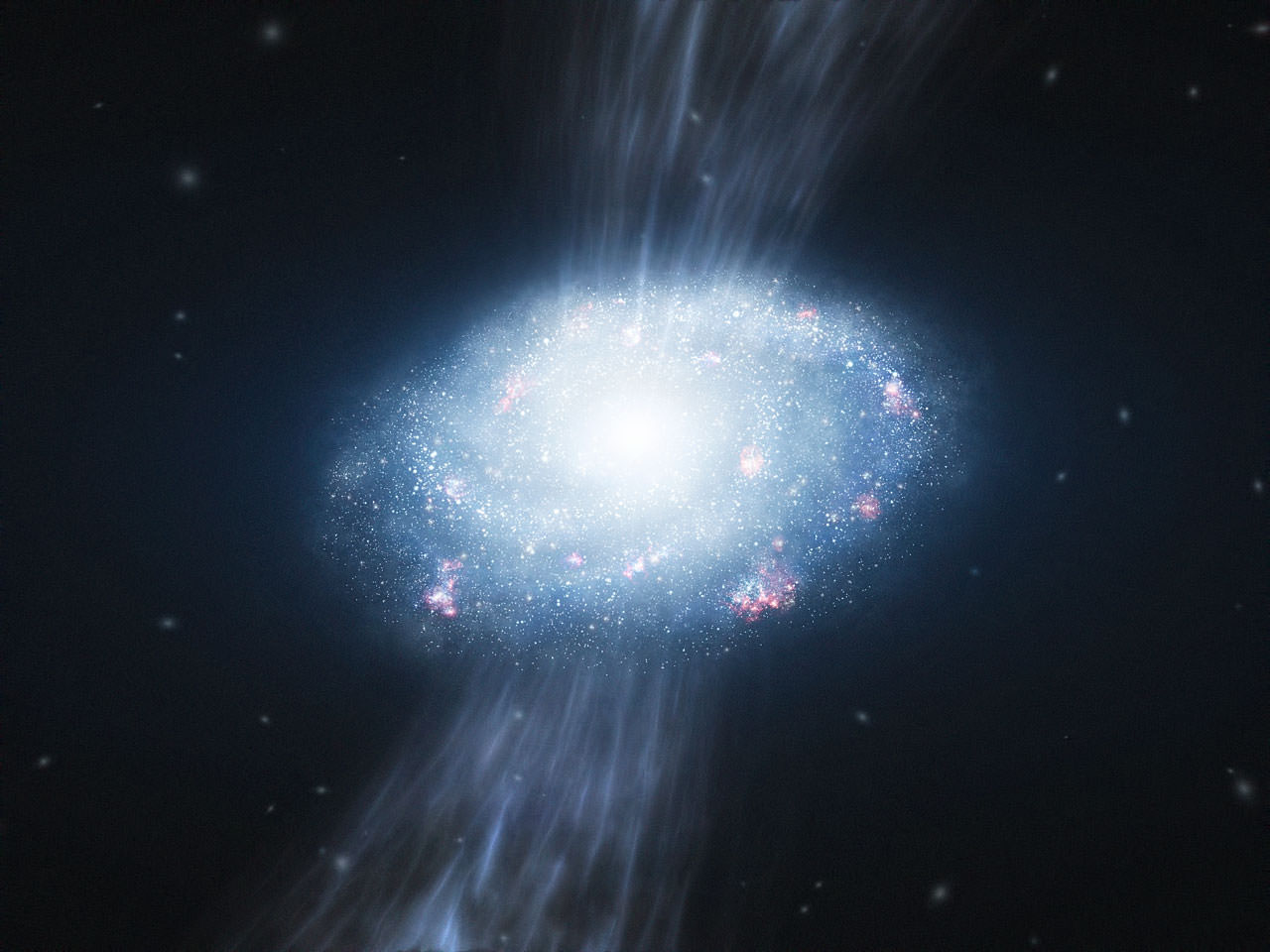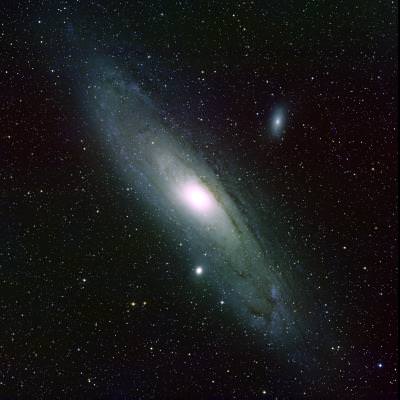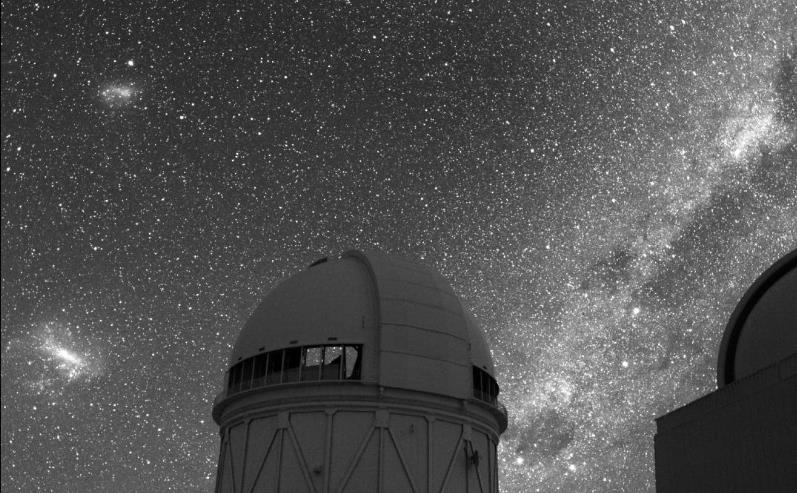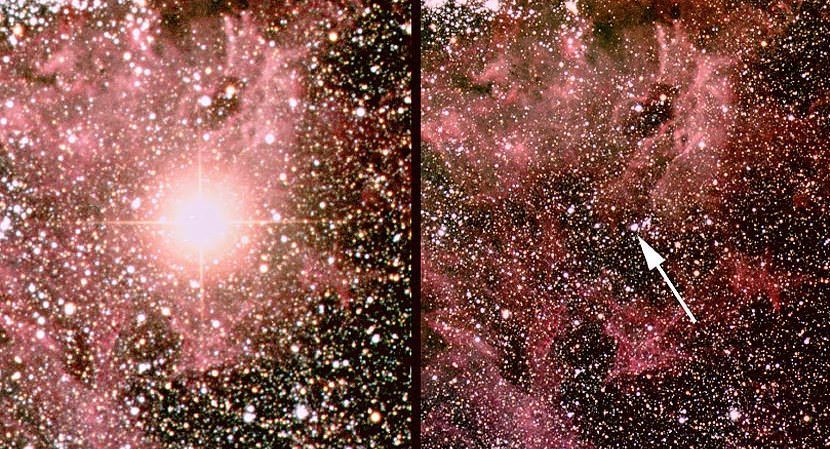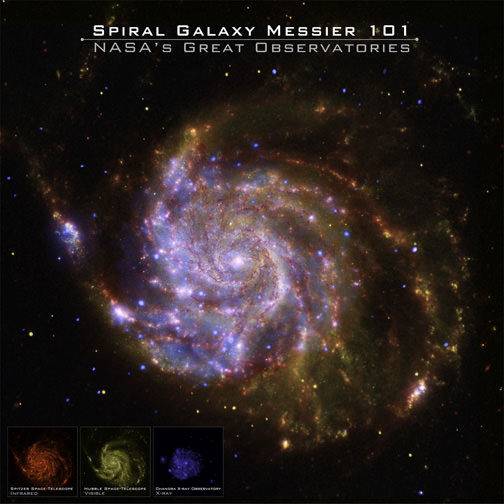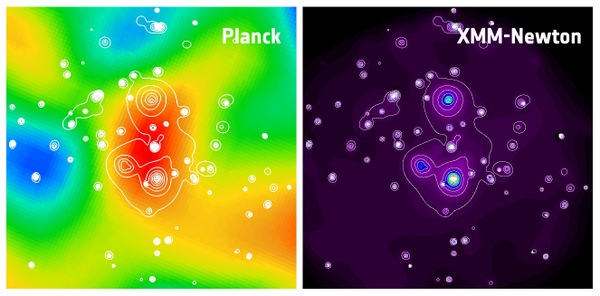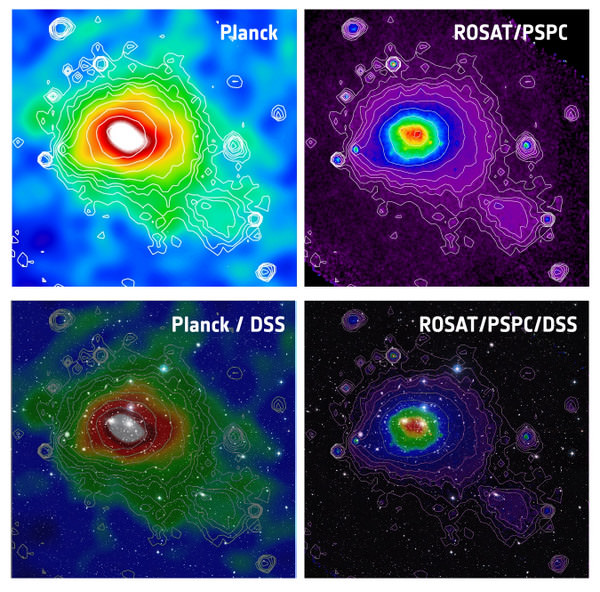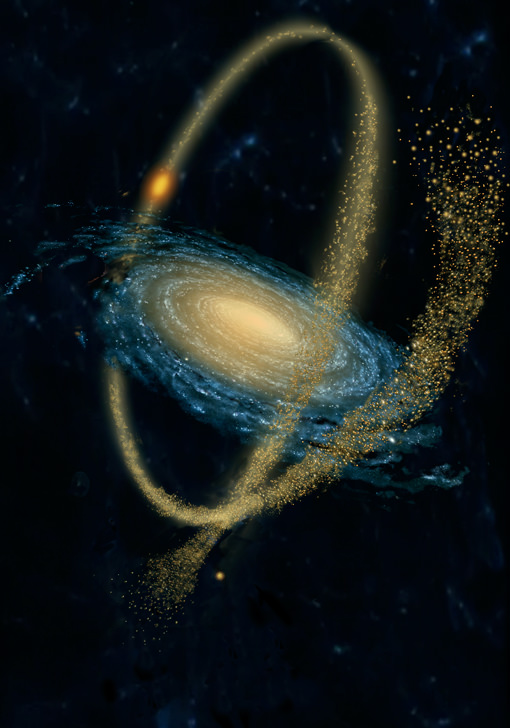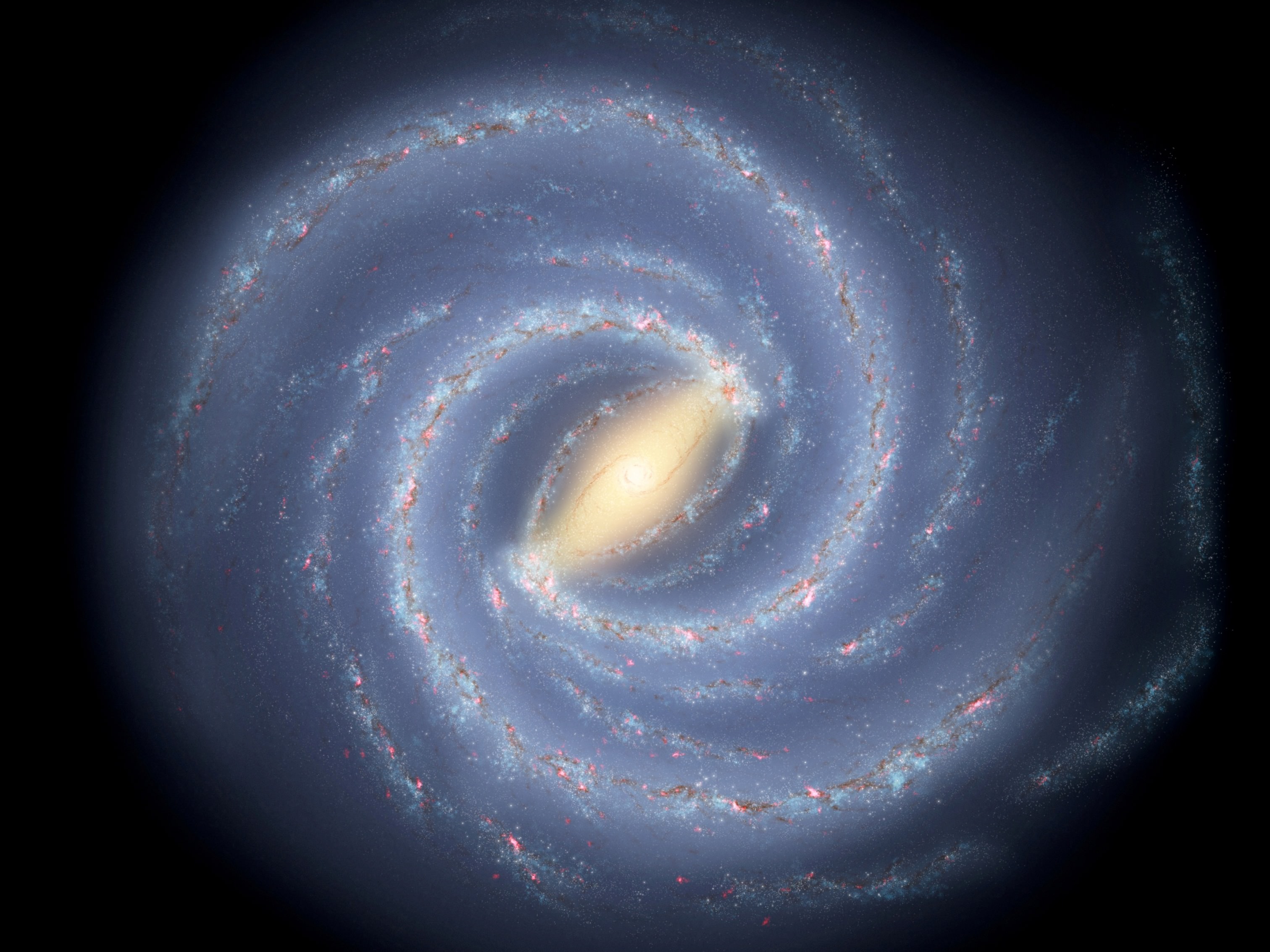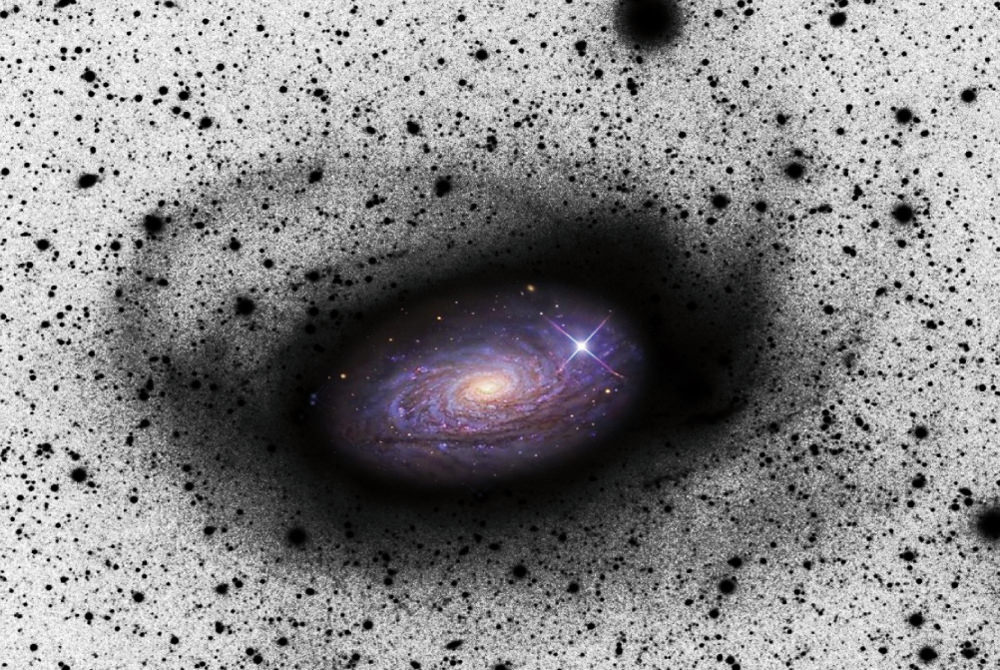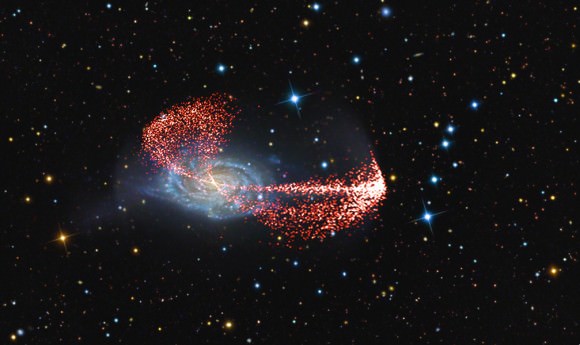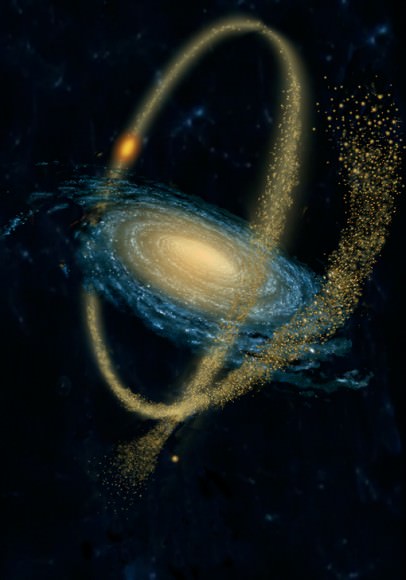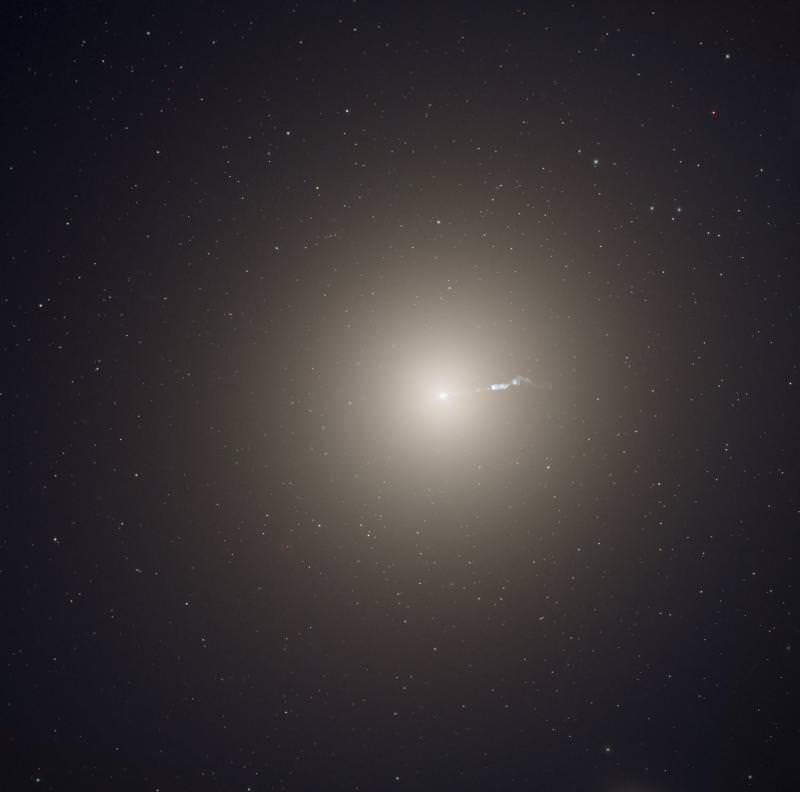[/caption]
Until recently, it was thought the galactic equivalent of a motorway pile-up was the only way galaxies got bigger. But startling new evidence from a European team of astronomers suggests that violent galactic collisions are not the only way that galaxies evolve and grow, and instead there seems to be something else happening that has affected the majority of galaxies — a kinder, gentler action which is not quite so disruptive.
For some years, astronomers have struggled to understand why the mass of galaxies seems to have increased dramatically just a few billion years after the Big Bang. We know from observation that galaxies collide but this is an incredibly violent activity and one that is not particularly common.
A new study using the Very Large Telescope (VLT) at the European Southern Observatory (ESO), by a team led by Giovanni Cresci, looked for evidence that galaxies might be accreting material from the hydrogen and helium gas that filled the early Universe and permeates the space between the galaxies. We know that they are surrounded by halos of unseen material but Cresci’s team wanted to see if there was any evidence of material being sucked into the galaxy from the surrounding environment.
Their study focused on a group of distant galaxies which would represent those in the early Universe, about 2 billion years after the big bang, to see if they could detect any evidence of this gas accretion.
Using the SINFONI (Spectrograph for Integral Field Observation in the Near Infrared) attached to the VLT, Cresci and his team mapped the distribution of elements within the target galaxies. Their findings showed that instead of heavier elements being concentrated around the core as we find in today’s galaxies, the core was surprisingly abundant of the lighter elements hydrogen and helium. This can only be as a result of accretion of lighter elements from the surrounding area boosting the rate of star formation in the core. The accretion process itself relies on cool gas being transferred directly into the core of the galaxy.
“The primordial gas in the halo of galaxies, especially at great distances, is mostly shock heated and therefore very hot,” Cresci told Universe Today. “To be accreted it has to be cooled and this is not an efficient process. Recent theoretical models have shown that narrow streams of cold gas can form, and that they are able to penetrate the hot gas and to provide fresh gas to the centre of the galaxy. Unlike more destructive and violent mergers between galaxies, the streams are likely to keep the rotating disk configuration intact, although turbulent.”
This new discovery means astronomers have perhaps found an answer to a long standing question but with the major consequence of needing to rewrite our current theories of the evolution of the Universe.
Source: ESO, email exchange with Cresci
Mark Thompson is a writer and the astronomy presenter on the BBC One Show. See his website, The People’s Astronomer, and you can follow him on Twitter, @PeoplesAstro

